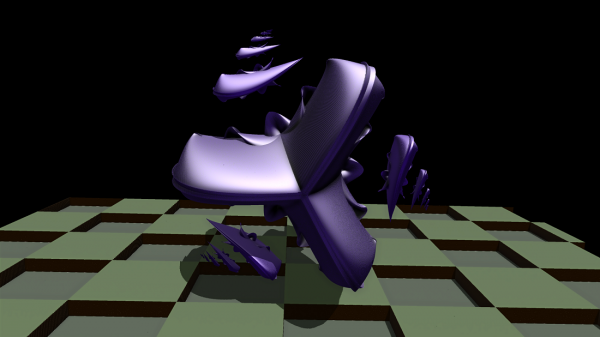BY LETTER
Conceptication
Technology > Application > Communications
Culture and Society > Cultural Factors > Knowledge and Information
Science > Biology > Neuroscience
Culture and Society > Cultural Factors > Knowledge and Information
Science > Biology > Neuroscience
 Image from Avengium |
To communicate information, a sophont can copy and (if necessary) edit a portion of the personal memory stored in one's mnemonet, and transmit it directly into the mnemonet of another sophont, where it is tagged as being a non-original memory and loaded directly into their mind. Instead of telling someone about your vacation you simply give them the memory of what you did. This is a highly efficient form of communication, but can lead to the generation of group-minds and occasionally unexpected ascensions.
The conceptication generally includes a detailed concept-map designed to ease the translation between different sophont minds; since biont minds are idiosyncratic, self-organised and uniquely complex in many respects, these concept-maps are indispensable.
Conceptications can also be used as a vector for memetic infection. For instance a shared memory of a discussion detailing the various types of foglets currently on the market might include an emotional subcontext of quiet satisfaction with certain brands. A conceptication including such a subcontext will tend to subconsciously influence customers to be more positive towards those brands than others. In many polities this sort of subcontext is tightly regulated; in others it is broadly accepted or even encouraged.
Related Articles
- Concept Map
- Exocortex
- Exoself
- Knowledge Engineering - Text by M. Alan Kazlev
Design and construction of intelligent and semi-intelligent systems. In other words, the art and science of designing and building expert systems, aioids, and ais. In particular this involves collecting knowledge and heuristic rules from sophont and hyperturing experts in their area of specialty and assembling them into a knowledge base or expert system. - Knowledge Graft
- Knowledge Manipulation
- Knowsense
- Mnemonet - Text by Todd Drashner
Biocybernetic network of nanodevices grown in an organic brain and working to constantly record the owners brain activity and memories. The contents of the network are periodically downloaded to a central file and integrated into the mind-state stored there. If the owner dies for some reason, the mind-state is activated and instantiated in a new body to continue the life of the original. Mnemonets are also used to expand the memory of the user when the original organic memory has reached its limits due to the length of the users lifespan. In the more advanced systems, mnemonets designs are written into the gene-code of all citizens so that they develop as part of the natural growth process of a fetus and child. - Tachydidaxy
Appears in Topics
Development Notes
Text by Todd Drashner with additions by John B and Steve Bowers
Initially published on 31 December 2007.
Initially published on 31 December 2007.






